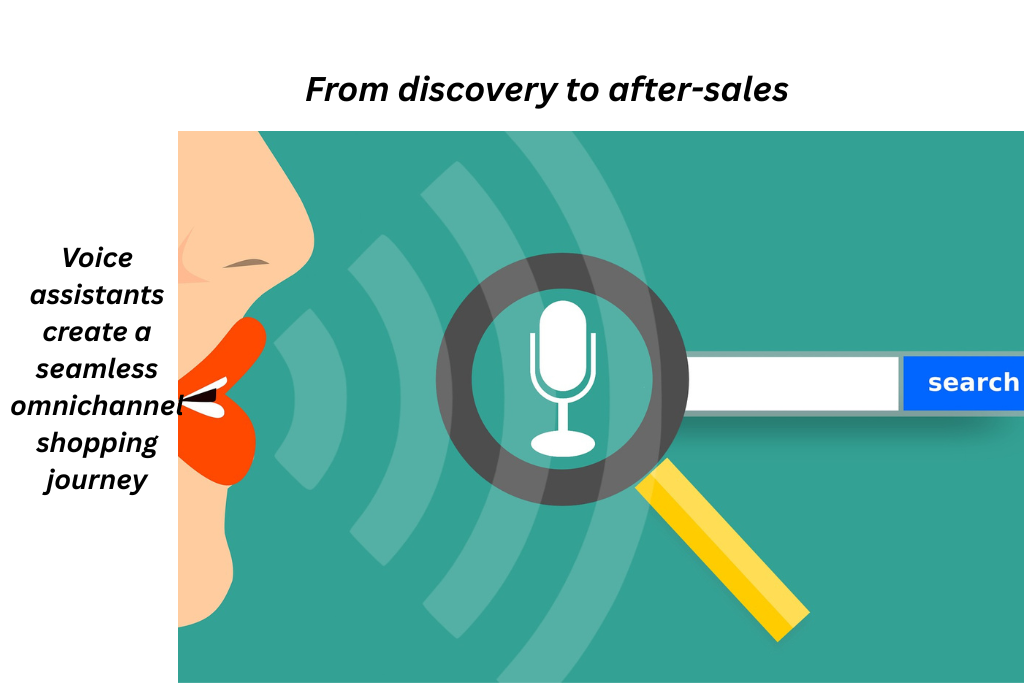
Voice-Activated Shopping for SMEs: Omnichannel Strategies with Hyper-Personalization
Voice-activated shopping is becoming a new normal. Voice assistants such as Alexa, Siri, and Google Assistant are changing the method of shopping for people. A report of this industry suggests that voice shopping will reach around $ 40 billion globally by 2025. It confirms that this trend is a change in consumer behavior, and they have adapted to this mode of buying their favorite products.
For SME, voice-active shopping is a challenge and a golden opportunity. They can mix voice commerce with omnichannel retail strategies. By layering in hyper-personalization, small businesses can deliver a personalized experience that big brands offer. The best part is, they don’t need massive budgets to deliver that seamless experience.
What is Voice-Activated Shopping?
Voice-activated shopping, or voice commerce, is the process of using voice commands to buy online. The customer uses voice commands through their smart devices to search. They can place orders, buy products, or even manage reorders. This means that instead of browsing through websites or apps, customers simply ask their device to do the work.
This shopping style is easier and is reshaping the omnichannel experience. A voice search might start on a smart speaker at home. It then continues on a smartphone app, which ends with commuting and in-store pickup. This uninterrupted flow between online and offline touchpoints is actually what omnichannel retail is about. Here are the major platforms that are adapted to this mode of shopping:
- Amazon Alex, which is integrated with Amazon’s retail ecosystem and third-party skills.
- Google Assistant is powerful for local business discovery and product searches.
- Apple’s Siri for iPhone users and on-the-go shopping lists.
- Smart TVs and in-car systems, which are emerging channels to make shopping possible anywhere.
If SMEs embrace voice shopping is like meeting customers on their devices. They must ensure that their customers find their products and services with a simple spoken request.
Why SMEs Should Care About Voice Commerce?
For small and medium-sized enterprises, voice commerce is not just a tech trend. It is their chance to compete smarter in a market that is usually dominated by big brands. Here’s why it matters:
- Unlike large retailers with massive ad budgets, SMEs can use voice commerce to gain visibility in new ways. Voice search relies on relevance, local optimization, and clear answers. These are areas where small businesses can move faster than big companies.
- Voice shopping gives hands free and more natural way to attract customers. They can find the products faster, even while cooking or driving, without raising a finger.
- This level of convenience builds loyalty and makes SMEs part of a customer’s daily routine.
Omnichannel Retail in the Era of Voice
Voice technology is a natural extension of omnichannel retail. Customers can move freely between online and offline touchpoints. For SMEs, integrating voice into this journey can create seamless and memorable shopping experiences. Here’s how voice-activation works in omnichannel retail shopping:
Product or Service Discovery
This is the first step of voice search. Customers might say ‘Find this product or service near me. He will get the desired results in seconds, making voice search a powerful tool for local visibility and product discovery.
Engagement
Once a customer is interested in that product, the voice can run deep engagement. It is like an app or in-store kiosk that gives voice-run product recommendations. This helps shopkeepers find out what they need interactively.
Conversion
Voice-activated shopping makes checkouts easier. A shopper could say, “Alexa, buy the same protein powder I ordered last month,”. Alexa will complete this purchase in seconds without navigating menus or typing.
After-Sales
Customer does not end on checkout. Voice assistants help them obtain delivery updates or make preferred products easy to arrange with a single command. It encourages repeat purchases and strengthens loyalty.
Large retailers such as Amazon and Walmart have already used voice in their omnichannel ecosystem. SMEs can use these strategies on a small scale:
- Adding voice search optimization to their website.
- Voice-competent re-ordering for popular products.
- Using integration (eg, Alexa skills or Google Actions) to provide customer assistance through voice.

Role of Hyper-personalization in Voice-active Shopping
When the SME pairs voice commerce with hyper-personalization, they can actually provide unique shopping experiences. By consisting of AI-operated insights obtained from voice conversations, SMEs can build strong and long-lasting customer.
Individual product suggestions
Voice Assistants can use purchase history and preferences to recommend products in real time. For example: “Depending on your previous orders, you can prefer this new organic tea mixture.” This makes shopping feel comfortable and comfortable.
Tailored offer
Instead of sending generic discounts, SMEs can give customized voice notifications such as: “Your favorite sneakers are on sale today. Would you like to reserve a pair?” These individual touch promotes conversion rates, feeling valuable to customers.
Dynamic repetition tips
Voice technology can predict when a customer is likely to run less of a product and is constantly offered to restore it. For example: “Would you like to re-order your favorite coffee beans?” This not only saves the customer’s time but also increases repeat sales for SMEs.
Practical Strategies for SMEs
Although adopting voice commerce may seem complex, SMEs can start small and extend their practices over time. Here’s how to do that:
- Step one is to optimize for voice search SEO. To optimize for voice search, target queries like ‘What is the best eco-friendly dog lease for big dogs instead of eco-friendly dog lashes”.Creating FAQ-style content and using natural language improves visibility in voice search results.
- Step two is to leverage local SEO in your content. It’s because many voice searches are location-based. SEMs should ensure that their Google Business Profile is up to date. Local SEO ensures your business shows up in those results.
- Step three is to use affordable tools. Voice integration does not always require custom development. Platforms like Shopify, Amazon, and WooCommerce already support voice commerce. This makes it easy for SMEs to test voice features without heavy upfront investment.
- Step four is to initiate data-driven personalization. You can do it by connecting CRM systems with AI tools. SMEs can use this data to track customer preferences and deliver personalized experiences.
Conclusion
Voice-activated shopping is still in its early stages. But the future holds more opportunities for SMEs. It makes it easier for them to reach diverse customer groups. They can also expand beyond local boundaries.






